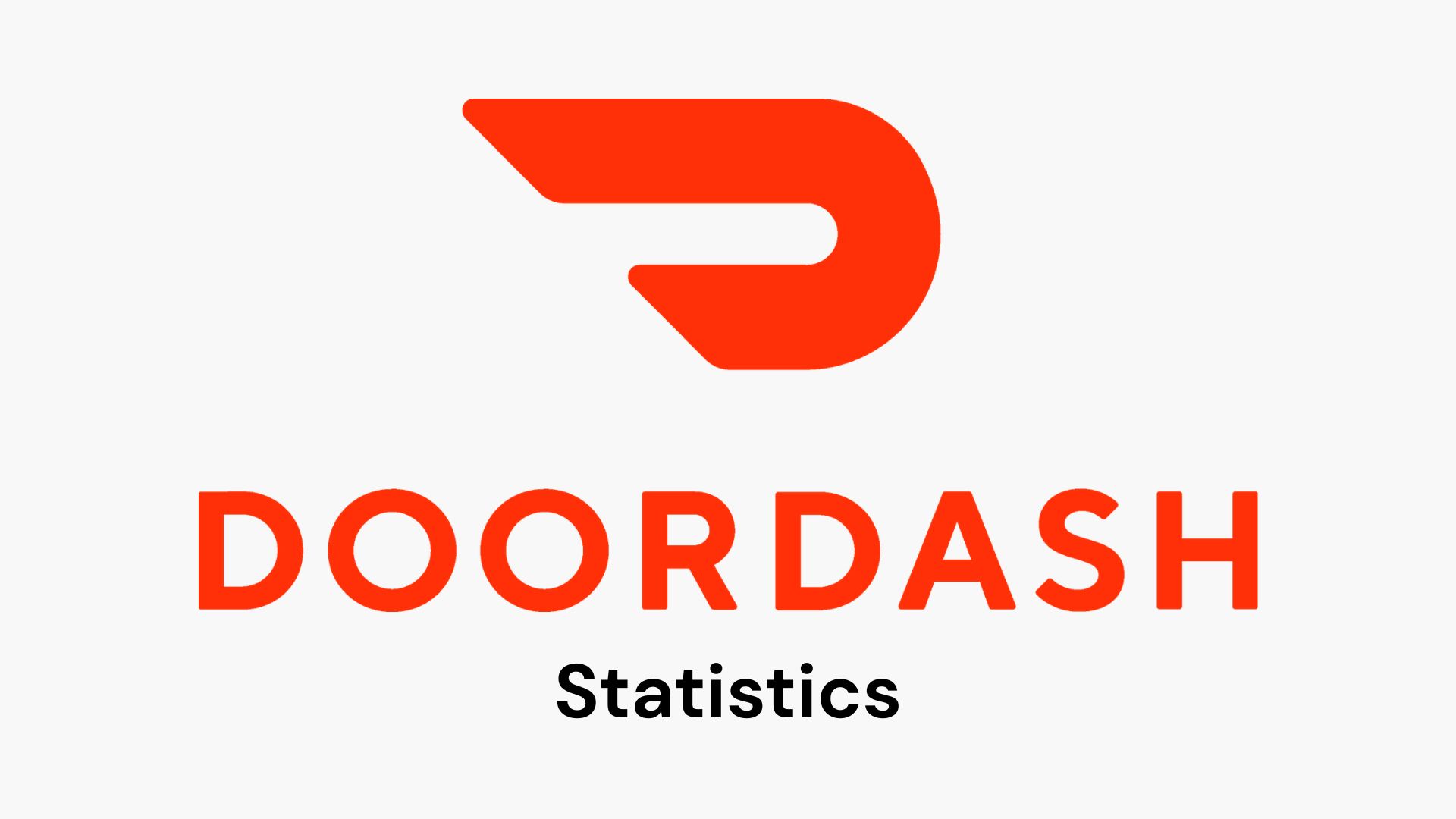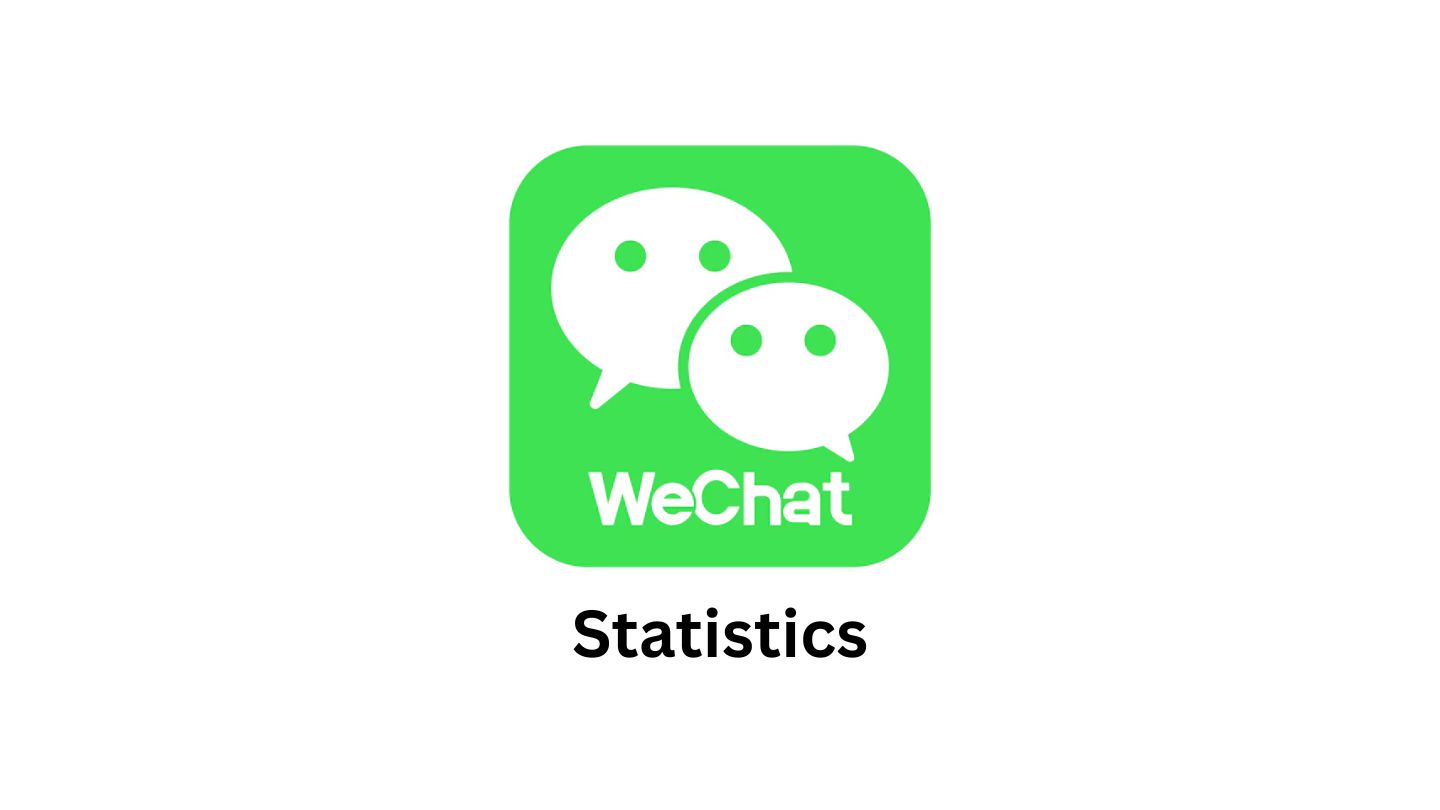Workplace Collaboration Statistics By Technology, AI Adoption, Benefits and Facts
Updated · Jan 07, 2025

Table of Contents
- Introduction
- Editor’s Choice
- Digital Workplace Market Revenue
- Digital Workplace Market Share
- Employee Opinion on Remote Workplace Teamwork
- Workplace Collaboration and Engagement Advantages
- Role of Technology in Workplace Collaboration
- Challenges in Workplace Collaboration
- Trends in Workplace Collaboration
- Employees Spend in the Workspace
- Remote Work Collaboration Patterns
- Advantage of Teamwork and Culture Building
- How Top-Performing Employees Spend Time
- Employee Opinion on Work Collaboration
- Workplace Collaboration Benefits
- Preferred Online Collaboration Tools
- Online Collaboration Tools as Per Age
- AI Adoption in The Workplace
- Digital Workplace Collaboration Advantages
- New Product Launches in Workplace Collaboration
- Future of Workplace Collaboration
- Conclusion
Introduction
Workplace Collaboration Statistics: Workplace collaboration has transformed dramatically in today’s rapidly evolving digital landscape, driven by technological advancements and changing work paradigms. The modern workplace is no longer confined to physical spaces, with remote work, digital tools, and collaborative technologies reshaping how teams interact, communicate, and accomplish goals.
Hence, it becomes essential to review the Workplace Collaboration Statistics to learn where technology, employee preferences, and organizational strategies intersect to create more flexible, efficient, and productive work environments. This would help assess the growing importance of remote work and collaborative tools; organizations are witnessing a shift in managing work.
Editor’s Choice
- The digital workplace market is expected to reach 234 million USD by 2032
- 95% of employees seek remote work opportunities
- 80% believe remote work collaboration is superior to in-person
- 83% feel confident about project status using performance management tools
- 75% of leaders find AI helpful in workplace collaboration
- 64% of companies consider virtual team setups essential
- 72% of teams see a productivity boost in collaborative environments
- 41% report improved customer satisfaction through collaboration
- Microsoft Teams is preferred by 31% of respondents
- 86% of 18-34 age group use online conferencing tools
- 40% improved operational efficiency with digital workplace
- 75% of employees report virtual team building enhances performance
- 53% experience burnout due to communication issues
- 24% use AI for service operations optimization
- 65% of employees waste time in meetings
Digital Workplace Market Revenue
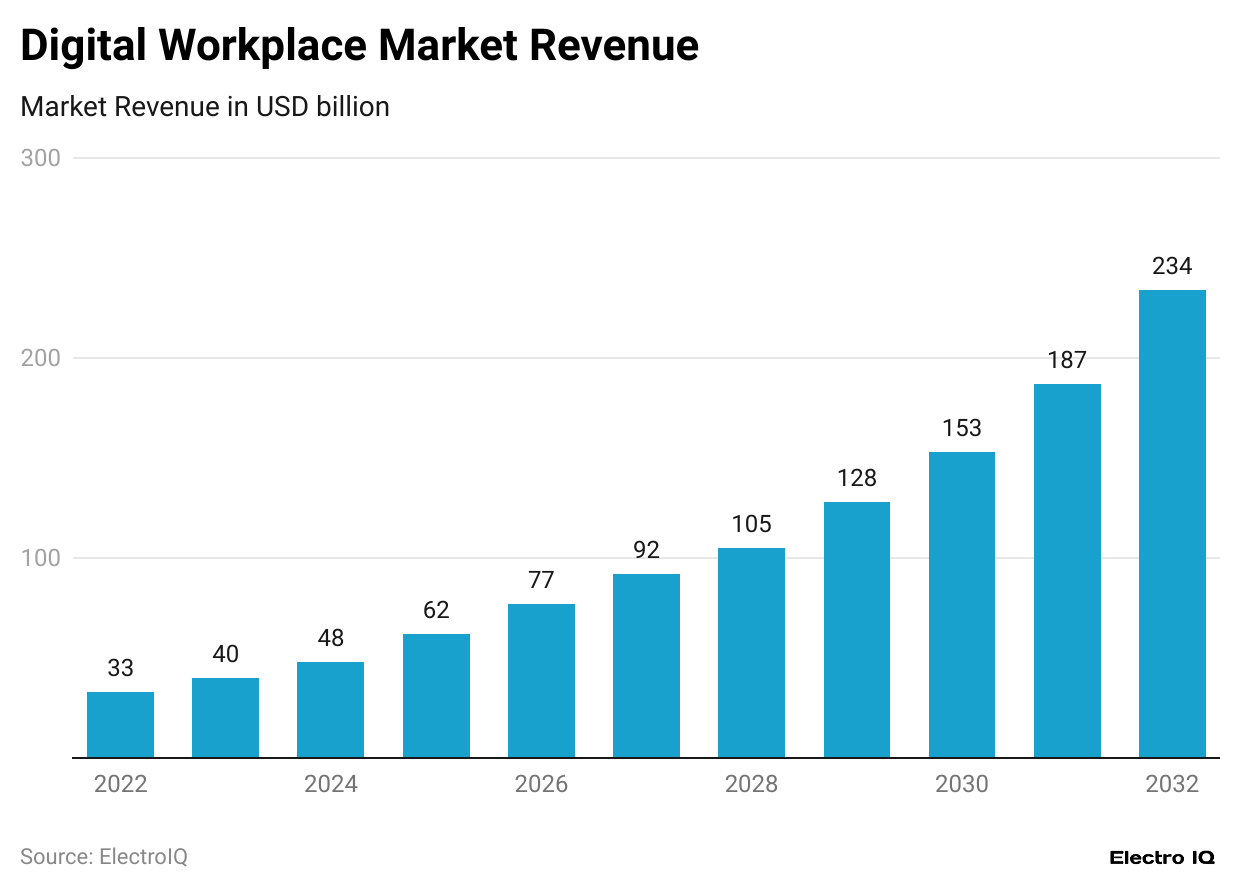
(Reference: scoop.market.us)
- Workplace Collaboration Statistics show that the market revenue of digital workplaces has shown signs of positive growth over time.
- In 2023, the digital workplace had a revenue of 40 billion USD.
- It is estimated that by the end of 2032, the digital workplace revenue will be 234 million USD.
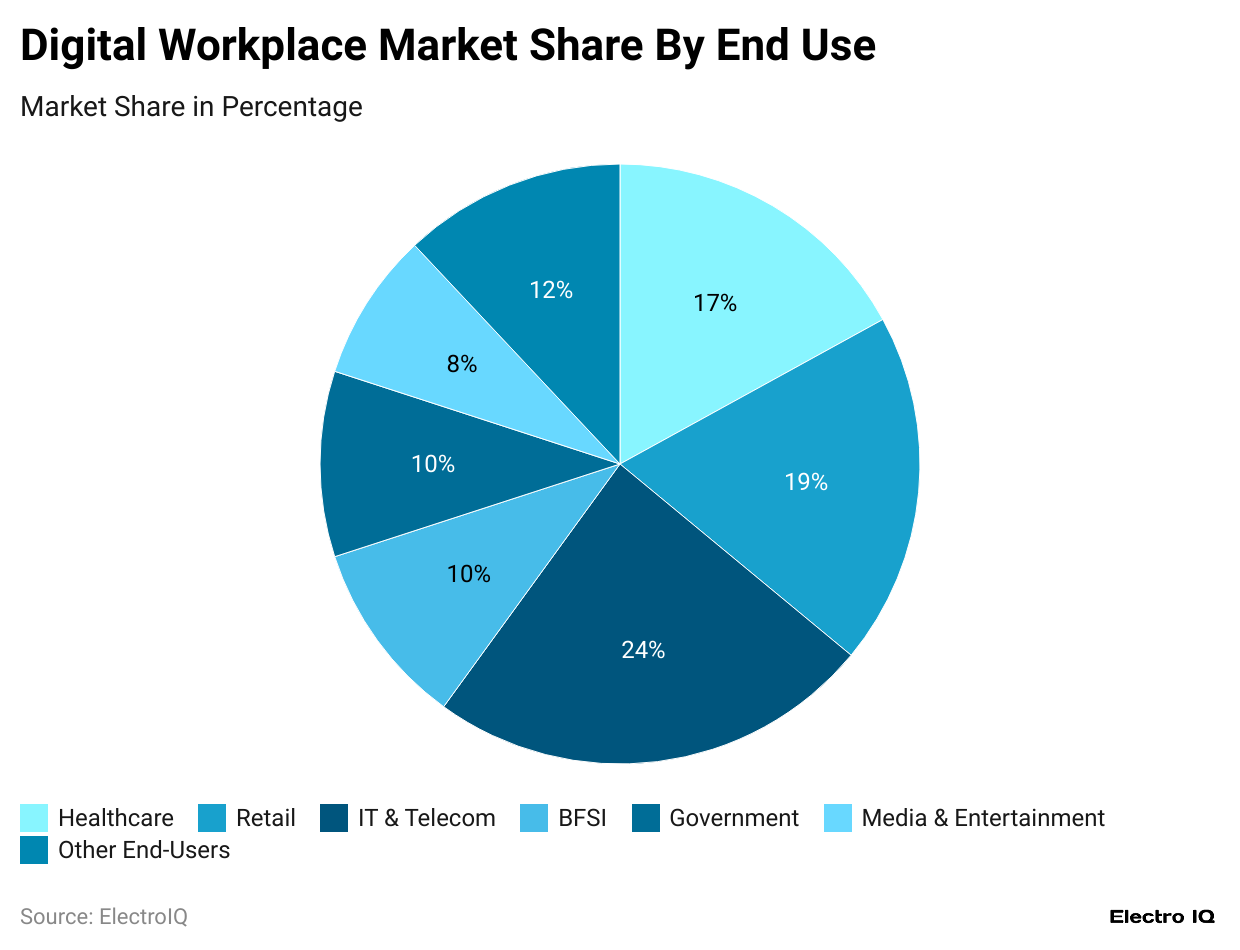
(Reference: scoop.market.us)
- Workplace Collaboration Statistics show that IT and telecom have the highest market share in the digital workplace, at 24%.
- Retail follows with a market share in the digital workplace of 19%.
- Healthcare holds the third position, with a market share in the digital workplace of 17%.
- Other End-Users account for a market share in the digital workplace of 12%.
- The BFSI (Banking, Financial Services, and Insurance) and Government sectors have a combined market share of 10% in the digital workplace.
- Media and Entertainment has the lowest market share in the digital workplace at 8%.
Employee Opinion on Remote Workplace Teamwork
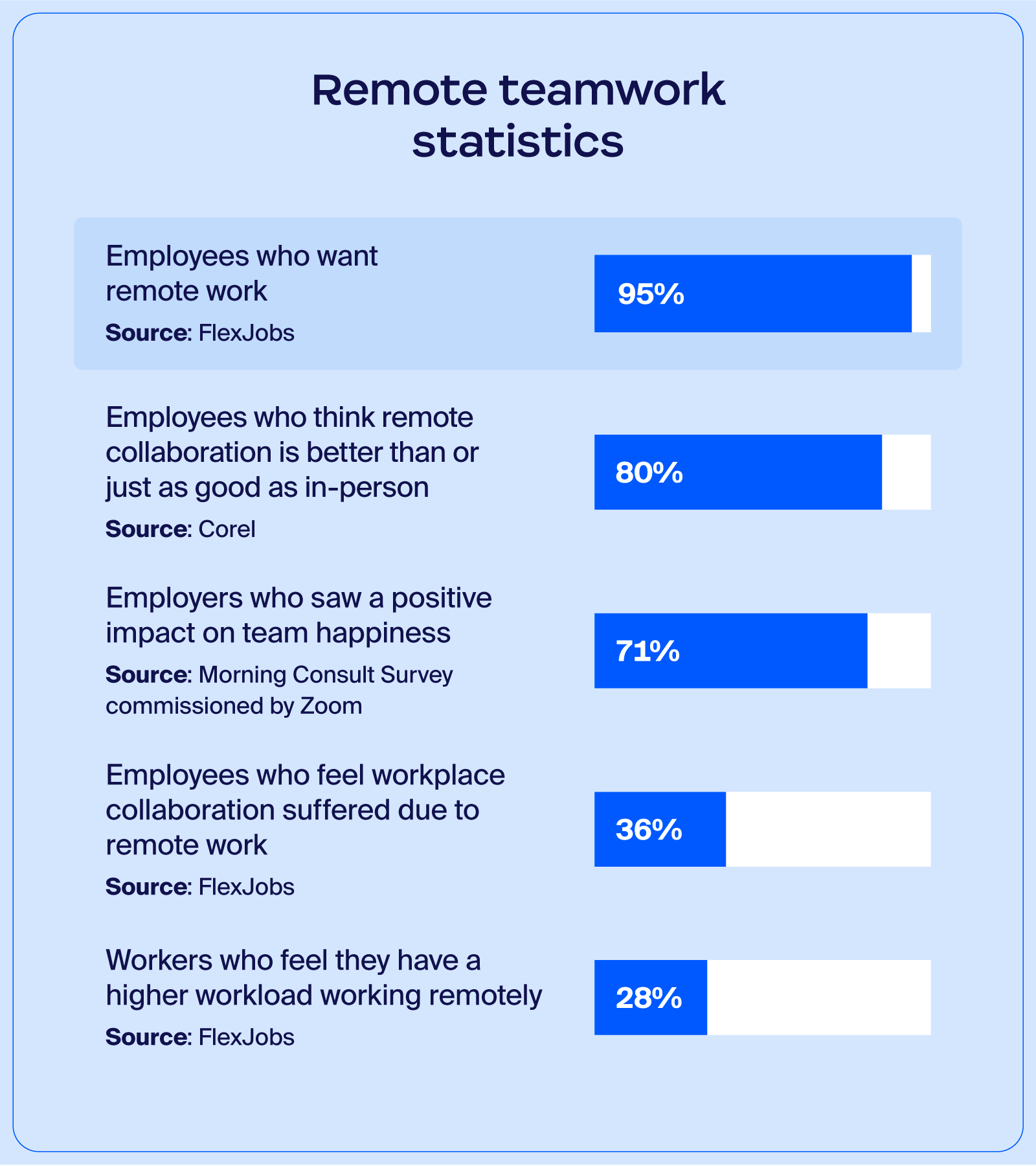
(Source: zoom.com)
- Workplace Collaboration Statistics show that 95% of employees seek remote work.
- 80% of employees believe remote work collaboration is better than in-person.
- 71% of employers observed a positive impact on team happiness due to remote work.
- 36% of employees feel workplace collaboration has suffered due to remote work.
- 28% of workers report experiencing a higher workload while working remotely.
Workplace Collaboration and Engagement Advantages
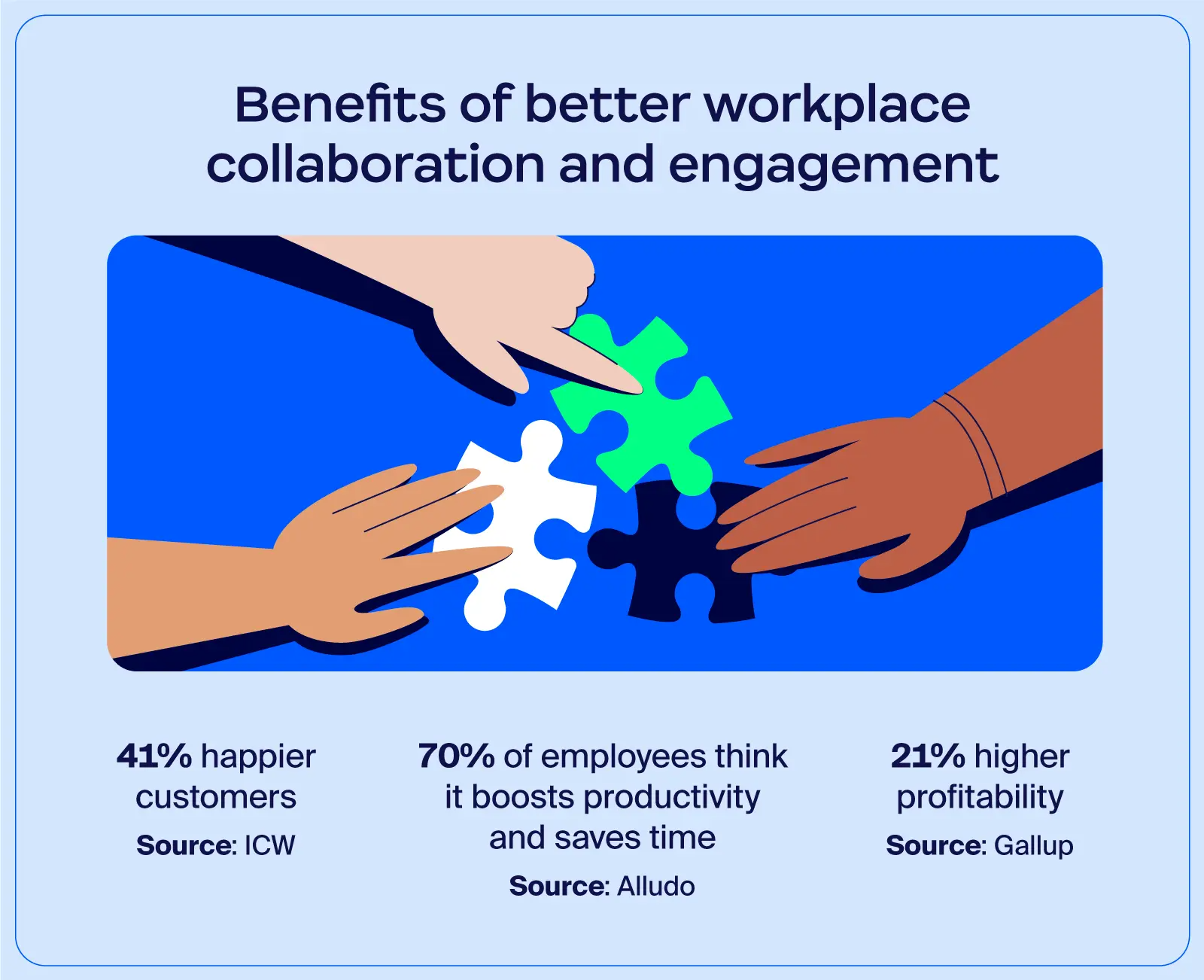
(Source: zoom.com)
- Workplace Collaboration Statistics show that 70% of employees believe workplace engagement boosts productivity and saves time.
- 41% of employees believe there are happy customers.
- 21% of employees believe workplace collaboration and engagement lead to higher profitability.
Role of Technology in Workplace Collaboration
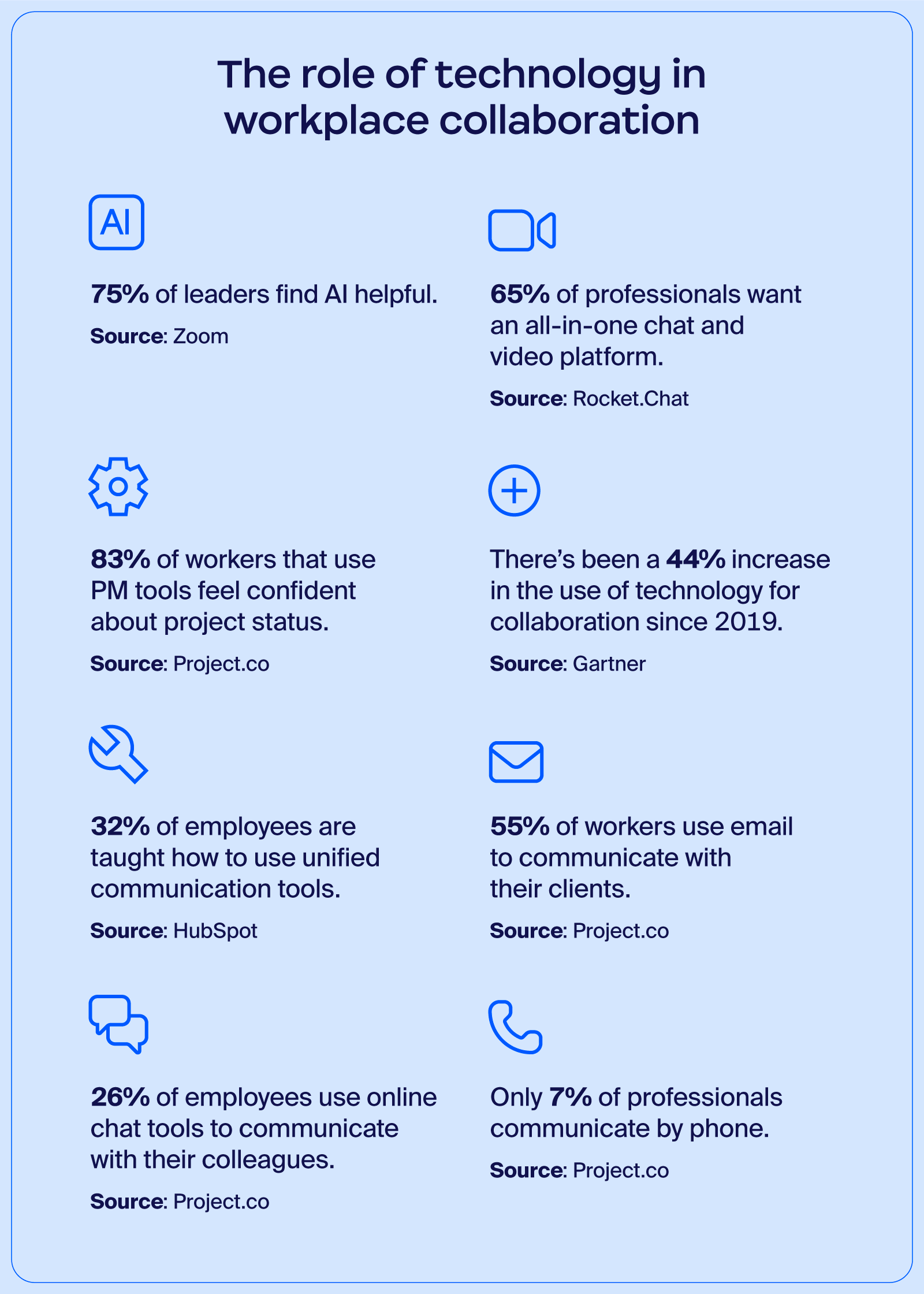
(Source: zoom.com)
- Workplace Collaboration Statistics show that 83% of employees who use performance management tools feel confident about project status.
- 75% of leaders find AI helpful in workplace collaboration.
- 65% of professionals want an all-in-one chat and video platform for communication.
- 55% of workers use email to communicate with their clients.
- A 44% increase has been observed in the use of technology for collaboration since 2019.
- 32% of employees are taught how to use unified communication tools.
- 26% of employees use online chat tools to communicate with colleagues.
- Only 7% of professionals communicate by phone.
Challenges in Workplace Collaboration
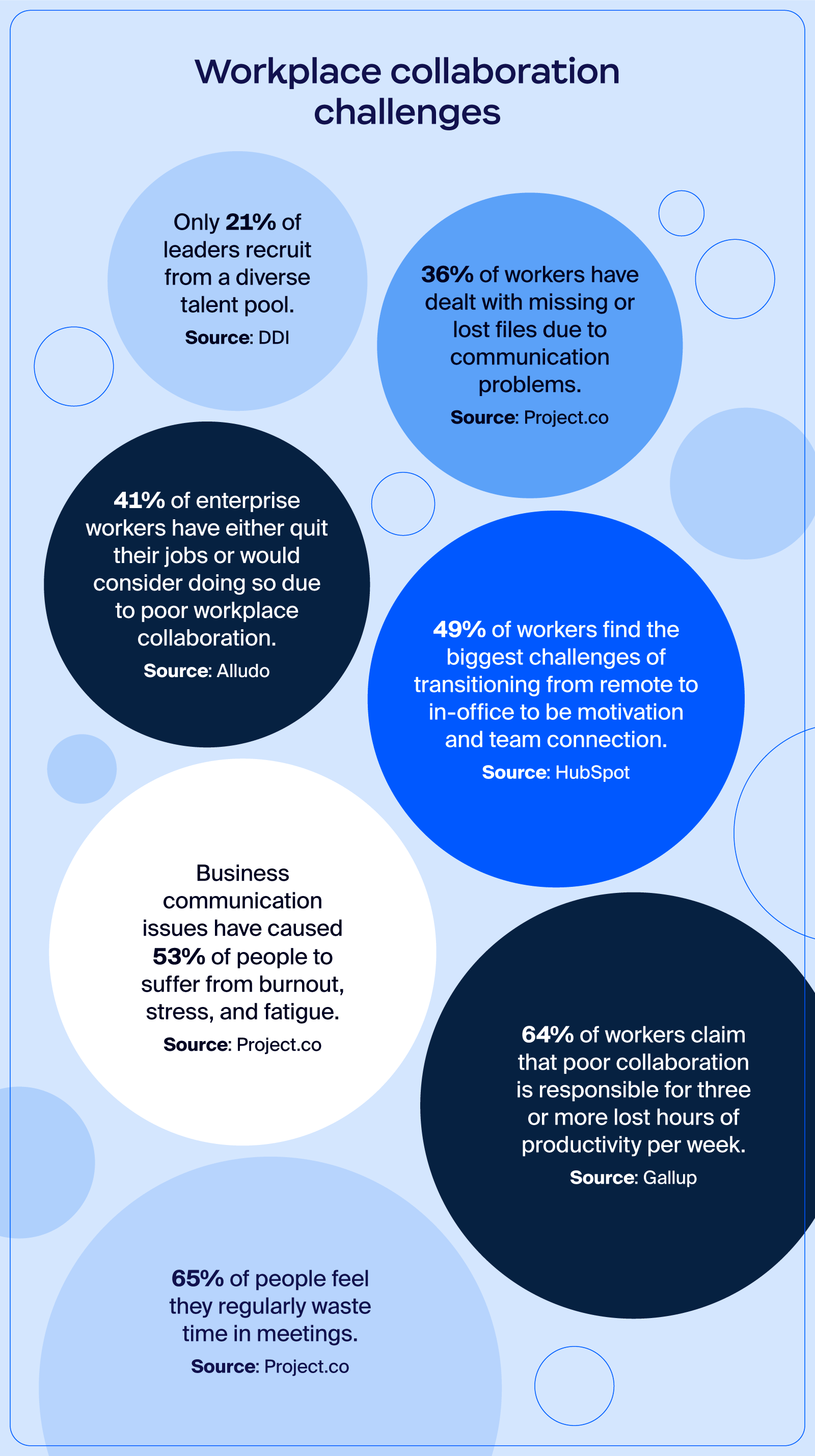
(Source: zoom.com)
- Workplace Collaboration Statistics show that 65% of employees regularly waste time in meetings.
- 64% of workers claim poor collaboration is responsible for three or more lost hours of productivity per week.
- 53% of people suffer from burnout, stress, and fatigue due to business communication issues.
- 49% of workers find transitioning from remote to in-office work challenging for motivation and a team connection.
- 41% of enterprise workers have quit or considered quitting their jobs due to poor collaboration.
- 36% of workers have experienced missing or lost files due to communication problems.
Trends in Workplace Collaboration
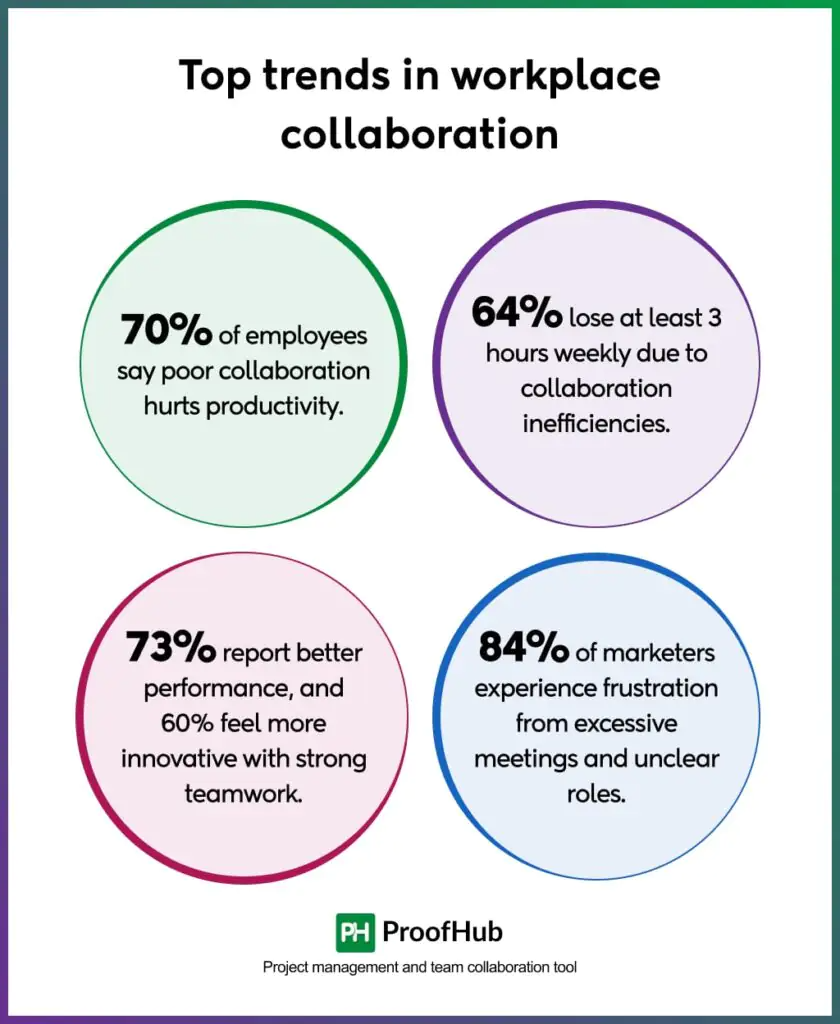
(Source: proofhub.com)
- Workplace Collaboration Statistics show that 84% of marketers experience frustration from excessive meetings and unclear roles.
- 73% of employees report better performance, and 60% feel more innovative with strong teamwork.
- 70% of employees say poor collaboration hurts productivity.
- 64% of workers lose at least 3 hours weekly due to collaboration inefficiencies.
Employees Spend in the Workspace
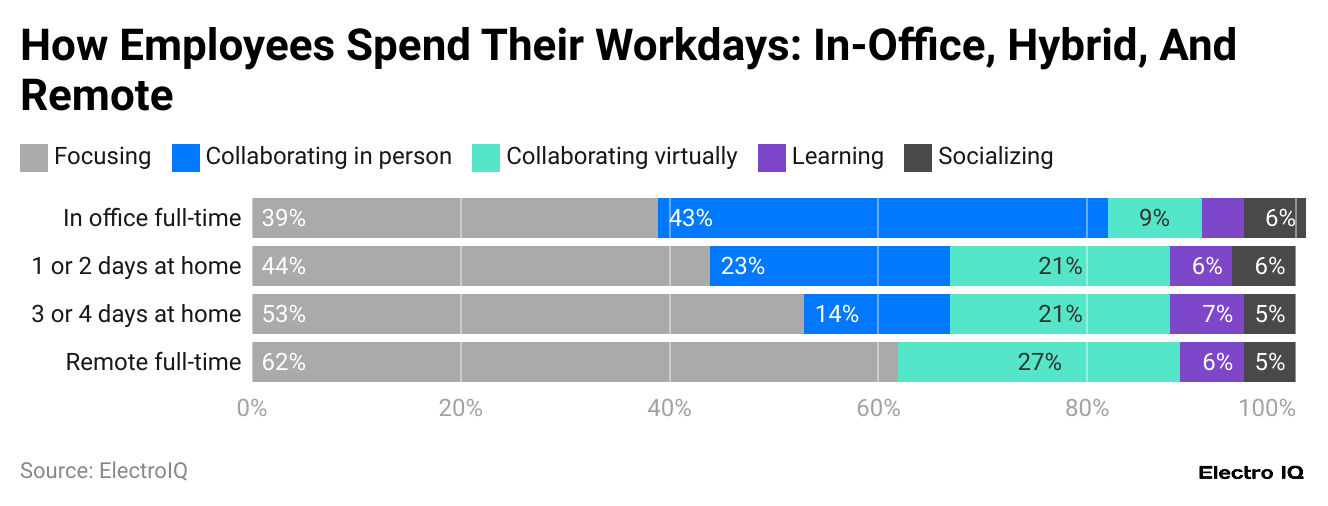
(Reference: zippia.com)
- Workplace Collaboration Statistics should show that remote full-time employees spend 62% of their workday focused, 27% collaborating virtually, 6% learning, and 5% socializing.
- In-office full-time employees spend 43% of their workday collaborating, 39% focused, 9% Collaborating Virtually, and 6% socializing.
- Employees working 1 or 2 days at home spend 44% of their workday focused, 23% collaborating, 7% learning, and 6% socializing.
- Employees working 3 or 4 days at home spend 53% of their workday focused, 14% collaborating in person, 21% Collaborating Virtually, 7% learning, and 5% socializing.
Remote Work Collaboration Patterns
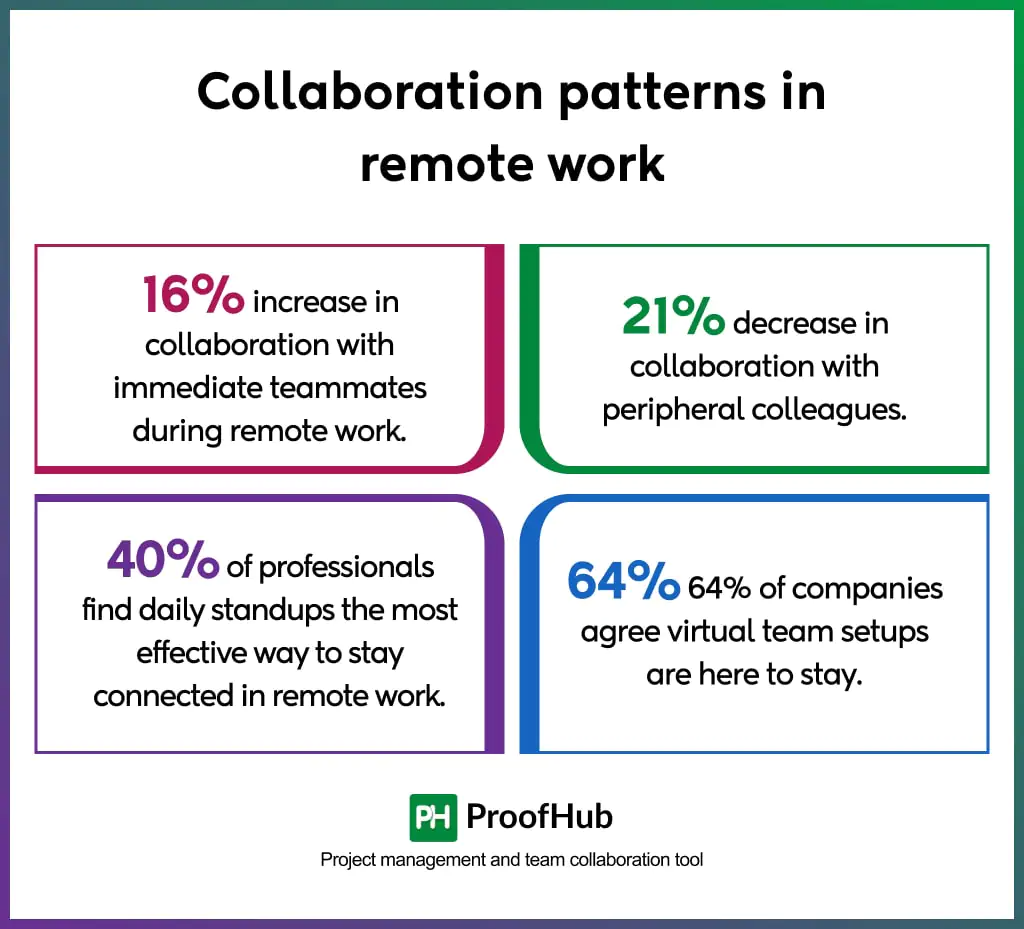
(Source: proofhub.com)
- Workplace Collaboration Statistics show that 64% of companies agree that virtual team setups are essential for business success.
- 40% of professionals find daily standups the most effective way to stay connected in remote work.
- 21% decrease in collaboration with peripheral colleagues during remote work.
- 16% increase in collaboration with immediate teammates during remote work.
Advantage of Teamwork and Culture Building
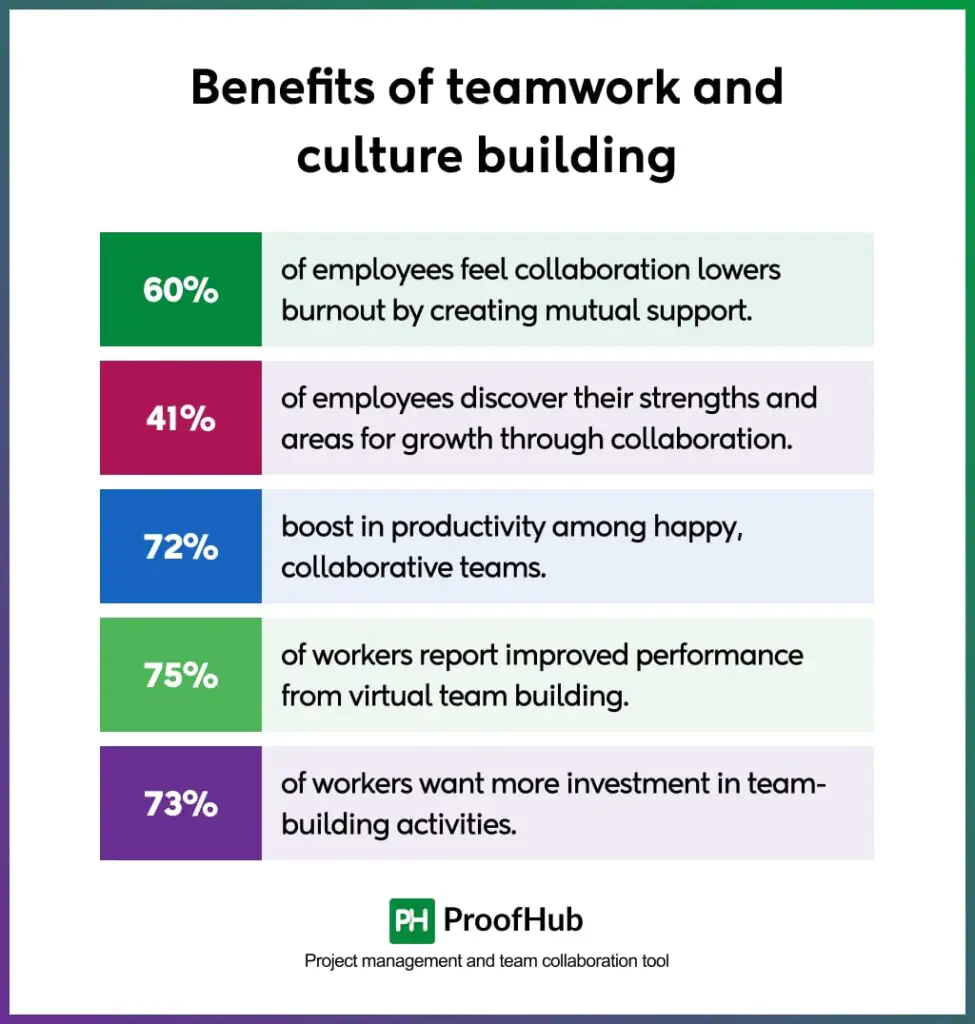
(Source: proofhub.com)
- Workplace Collaboration Statistics show that 75% of employees report that virtual team building improved their performance.
- 73% of employees want more investment in team-building activities.
- 72% of teams see a boost in productivity when they are happy and collaborative.
- 60% of employees feel collaboration helps reduce burnout by creating mutual support.
- 41% of employees discover their strengths and growth opportunities through collaboration.
How Top-Performing Employees Spend Time
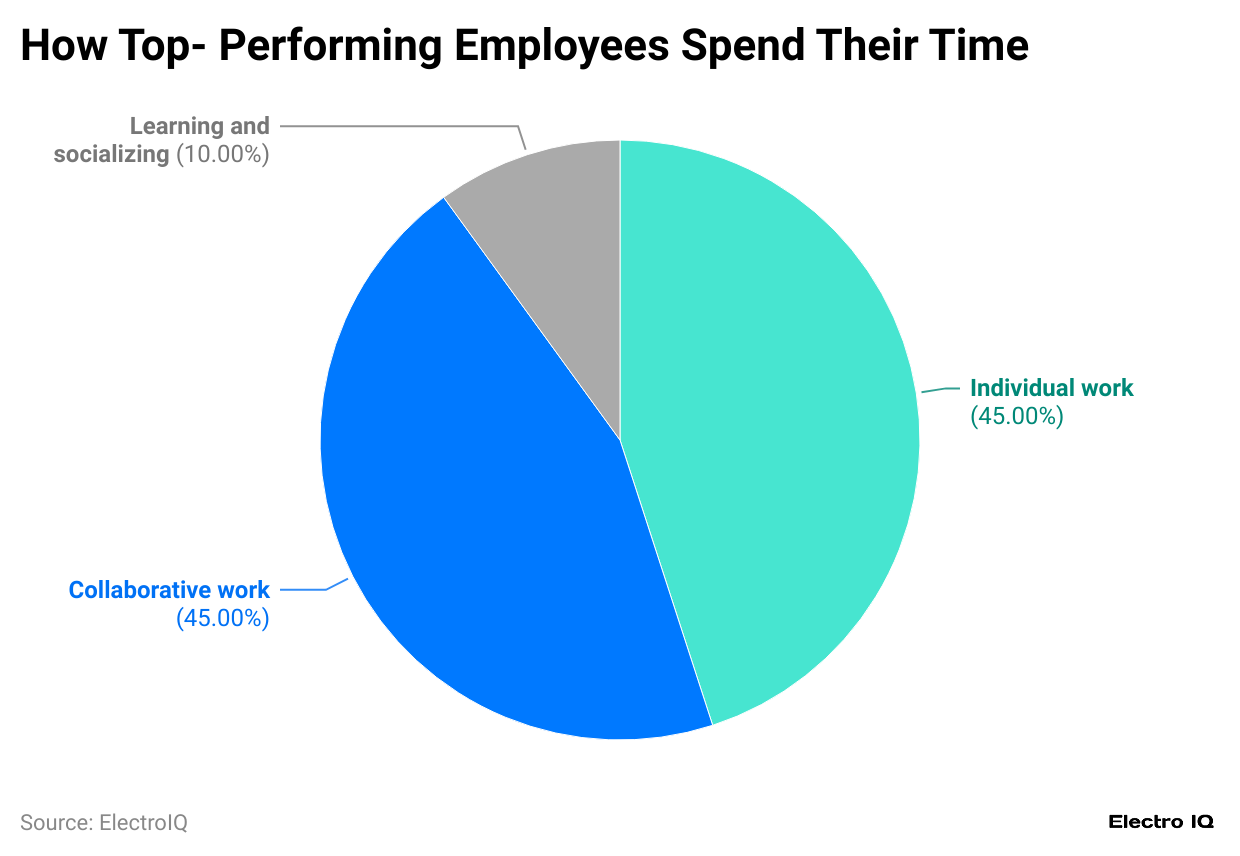
(Reference: zippia.com)
- Workplace Collaboration Statistics show that productive employees spend 45% of their time each in individual and collaborative work.
- 10% of employees focus on learning and socializing.
Employee Opinion on Work Collaboration
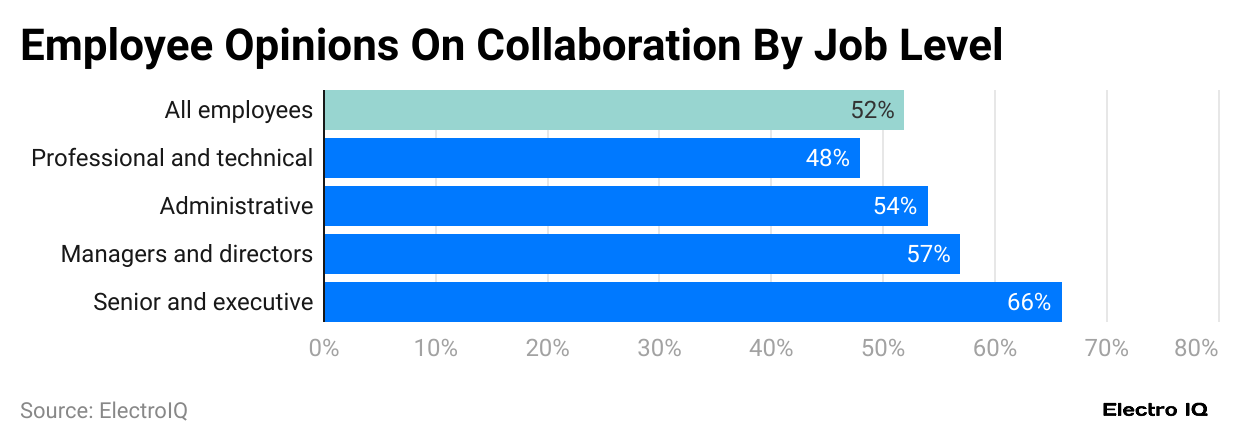
(Reference: zippia.com)
- Workplace Collaboration Statistics show that 52% of respondents, who comprise employees of all levels, regard teamwork as an essential part of the workplace.
- 66% of senior and executive-level employees rate teamwork as essential.
- 57% of managers and directors consider teamwork very important.
- 54% of administrative employees view teamwork as a key factor in the workplace.
- 48% of professional and technical employees believe teamwork is very important.
Workplace Collaboration Benefits

(Reference: zippia.com)
- Workplace Collaboration Statistics show that, according to 41% of respondents, collaboration increases customer satisfaction ratings.
- Workplace collaboration improves product quality, according to 34% of respondents.
- Workplace collaboration enhances product development, as reported by 30% of respondents.
- As 27% of respondents stated, workplace collaboration contributes to increased sales.
Preferred Online Collaboration Tools
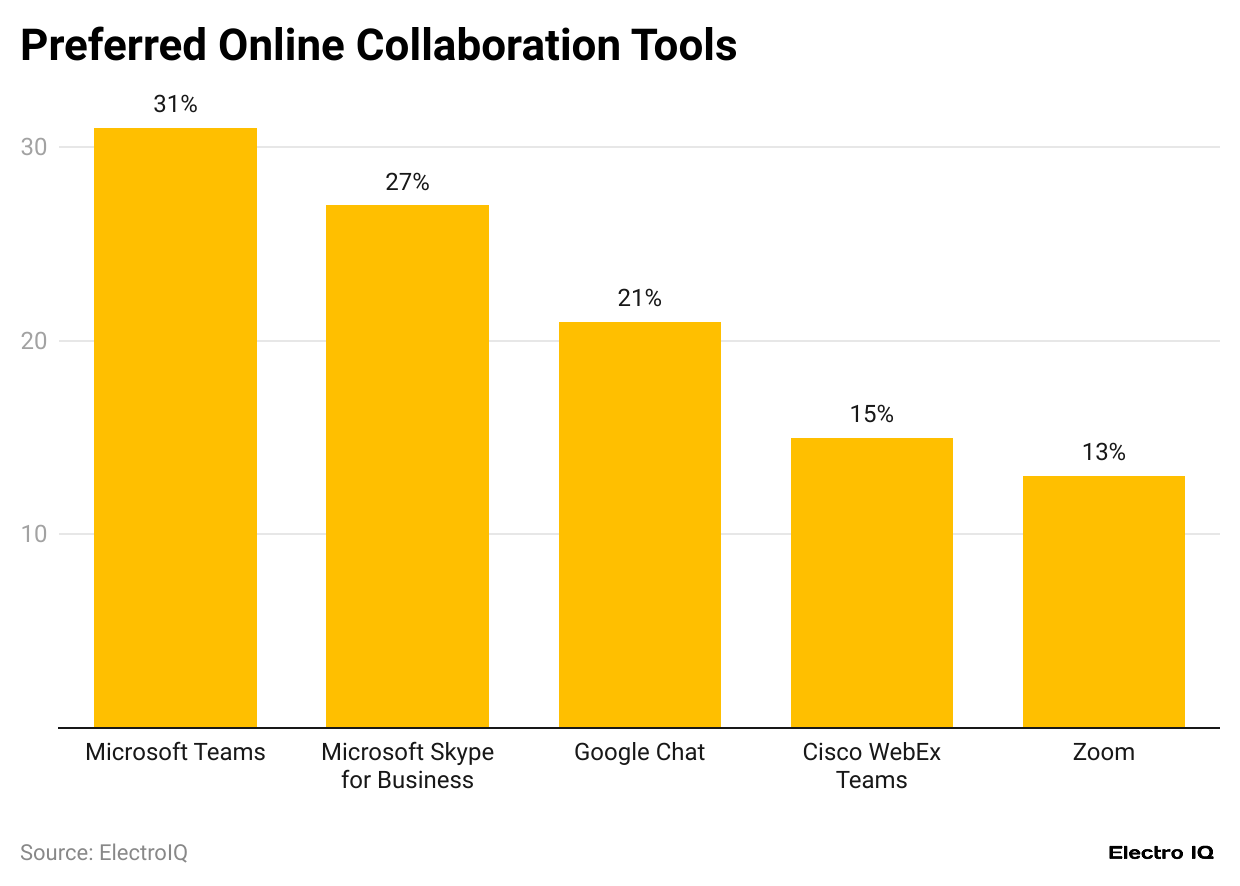
(Reference: zippia.com)
- Workplace Collaboration Statistics show that Microsoft Team is the preferred online collaboration tool per 31% of respondents.
- Google Chat is the preferred online collaboration tool for 21% of respondents.
- Cisco WebEx Teams is the preferred online collaboration tool for 15% of respondents.
- Zoom is the preferred online collaboration tool for 13% of respondents.
Online Collaboration Tools as Per Age
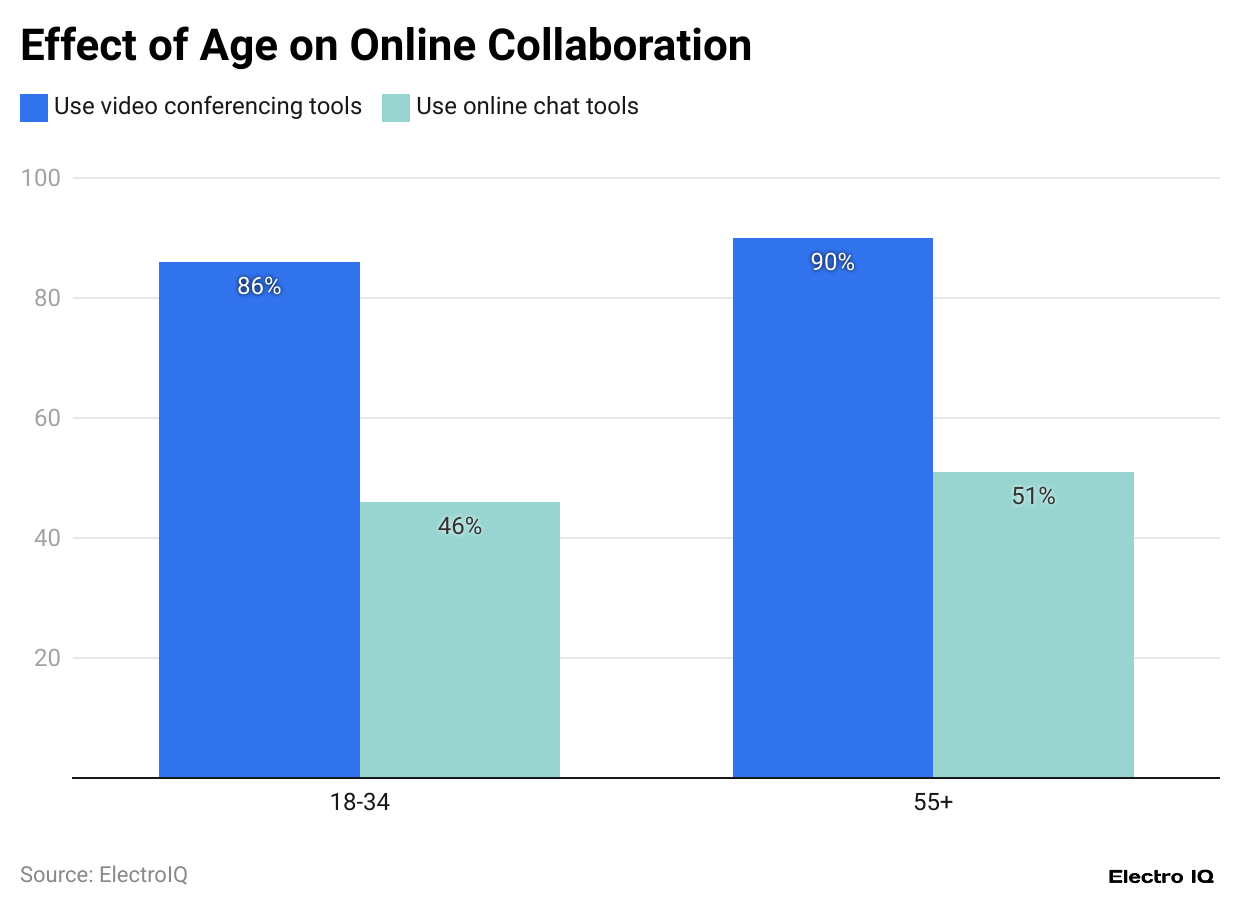
(Reference: zippia.com)
- Workplace Collaboration Statistics show that 86% of employees between the ages of 18 – 34 use online conferencing tools for collaboration.
- 46% of employees who are 55+ use video conferencing tools, and 51% of employees over 55+ use online chat tools.
- Almost 90% of employees aged 18 -34 use online chat tools.
AI Adoption in The Workplace
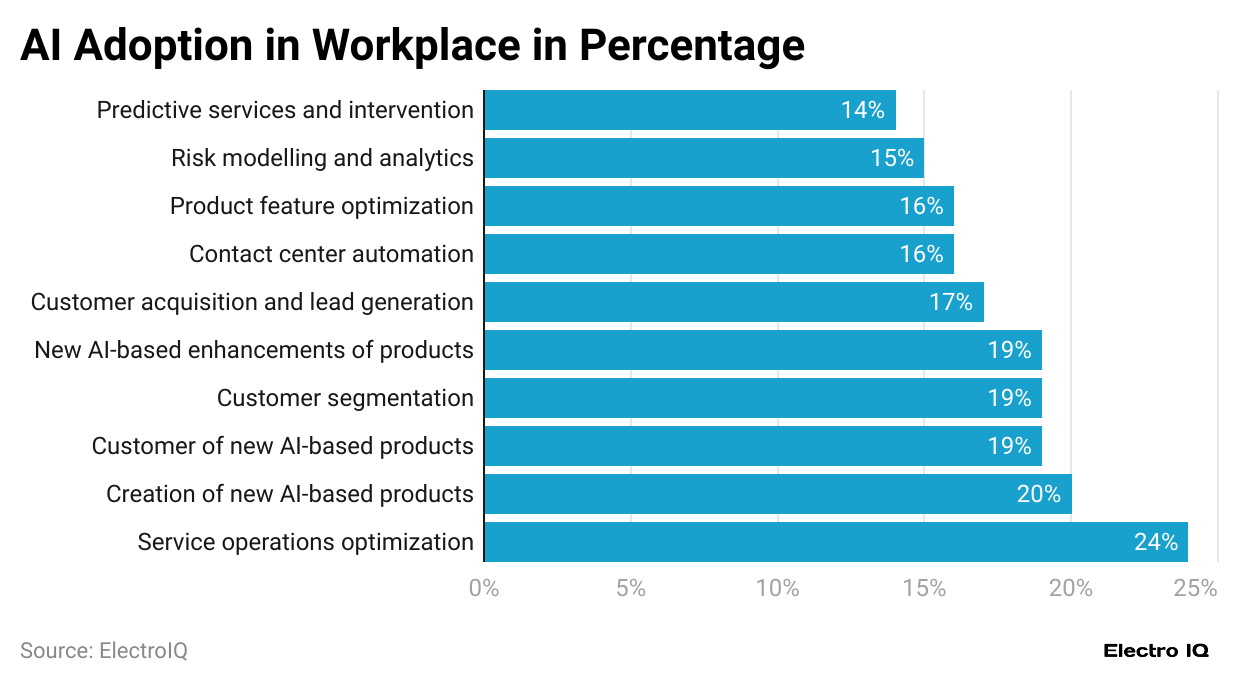
(Reference: scoop.market.us)
- Workplace Collaboration Statistics show that for 24% of respondents, service operations optimization is the AI use case in the workspace.
- For 20% of respondents, creating new AI-based products is the AI use case in the workspace.
- For 19% of respondents, new AI-based enhancements of products, customer segmentation, and customer service analytics are the AI use cases in the workspace.
- For 17% of respondents, customer acquisition and lead generation is the AI use case in the workspace.
- For 16% of respondents, AI uses in the workspace include optimizing product features and automating contact centers.
Digital Workplace Collaboration Advantages
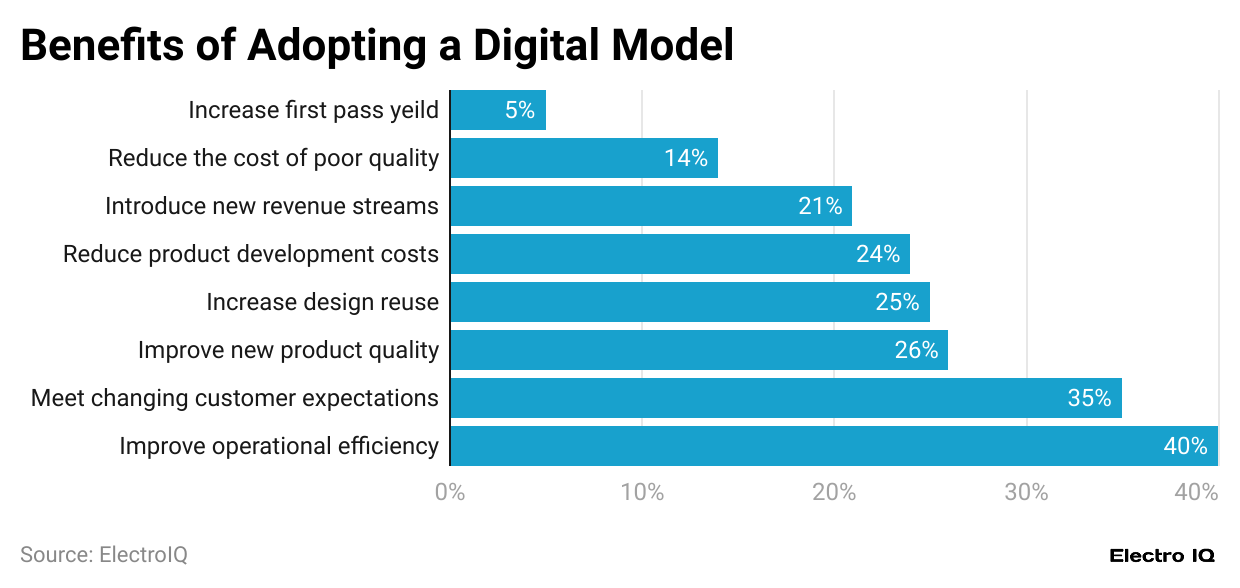
(Reference: scoop.market.us)
- Workplace Collaboration Statistics show that 40% of employees have improved operational efficiency using a digital workplace.
- By using a digital workplace, 35% of the employees have met changing customer expectations.
- By using a digital workplace, 26% of the employees have improved new product quality.
- By using a digital workplace, 25% of the employees have increased design reuse.
- By using a digital workplace, 24% of the employees have reduced product development costs.
New Product Launches in Workplace Collaboration
- Microsoft Copilot Actions: In November 2024, Microsoft introduced Copilot Actions, designed to automate everyday tasks with simple prompts and streamline employee workflows.
(Source: microsoft.com)
- Zoom Workplace: In March 2024, Zoom unveiled Zoom Workplace, an AI-powered collaboration platform to reimagine teamwork and enhance productivity through integrated tools.
(Source: news.zoom.us)
- Canva’s Workplace Tools: In May 2024, Canva launched a suite of workplace products, transforming its platform into an all-in-one solution to boost team creativity and collaboration.
(Source: canva.com)
- Cisco Collaboration Devices: In March 2024, Cisco announced new multifunctional collaboration devices, including the Cisco Board Pro G2, designed to deliver modernized experiences for hybrid workforces.
(Source: cisco.com)
- Microsoft Places: In May 2024, Microsoft introduced Microsoft Places, an AI platform to optimize hybrid work collaboration by managing office schedules and enhancing in-person connections.
(Source: lifewire.com)
Future of Workplace Collaboration
The future of workplace collaboration is evolving rapidly, influenced by technological advancements and changing work environments. Here are key trends shaping this future:
- Increased Remote and Hybrid Work: As of 2023, 12.7% of full-time employees work from home, with 28.2% following a hybrid model.
- Growth of Collaboration Tools: The global enterprise collaboration market is projected to reach $85.8 billion by 2026, growing at % compound annual growth rate (CAGR) of 12.7%.
- Enhanced Productivity: Digital workplaces and online collaboration software can boost productivity by up to 30%.
- Artificial Intelligence Integration: 90% of companies aim to adopt cognitive collaboration solutions that combine human intelligence with AI to enhance remote work.
- Increased Collaboration Time: Workplace collaboration has risen by at least 50% over the past two decades.
- Employee Satisfaction: Engaging in collaborative work leads to a 17% increase in employee job satisfaction.
- Impact on Innovation: Effective workplace collaboration can enhance innovation by 30%.
- Sales Growth: Companies that emphasize teamwork and collaboration experience a 27% increase in sales.
- Employee Retention: Organizations prioritizing effective communication are up to 4.5 times more likely to retain top-performing employees.
(Source: theecmconsultant.com)
Conclusion
The landscape of workplace collaboration is undergoing a profound transformation driven by technological innovation, changing workforce demographics, and evolving organizational strategies. Workplace Collaboration Statistics underscore the critical role of digital tools, remote work capabilities, and collaborative technologies in modern business environments.
While challenges persist—such as communication inefficiencies and potential burnout—the overwhelming evidence suggests that effective collaboration can significantly enhance productivity, employee satisfaction, and organizational performance.
As remote and hybrid work models continue to gain prominence, the ability to create seamless, engaging, and productive collaborative experiences will be a key differentiator for successful enterprises.
FAQ.
95% of employees seek remote work opportunities.
71% of employers observed a positive impact on team happiness due to remote work.
- 64% of workers lose productivity due to poor collaboration.
- 53% experience burnout from inadequate collaboration.
Microsoft Teams is preferred by 31% of respondents, followed by Google Chat at 21%.
- 86% of individuals aged 18-34 use online conferencing tools.
- 46% of individuals aged 55+ also use these tools.
- 70% believe it boosts productivity.
- 41% report that it leads to happier customers.
- 75% of leaders find AI helpful for improving collaboration.
- 24% use AI specifically for optimising service operations.
- In-office employees spend 43% of their time collaborating.
- Remote employees spend 27% of their time collaborating virtually.
40% of employees report improved operational efficiency through digital workplace solutions.
- 73% want more investment in team-building activities.
- 60% feel collaboration helps reduce burnout.

Saisuman is a skilled content writer with a passion for mobile technology, law, and science. She creates featured articles for websites and newsletters and conducts thorough research for medical professionals and researchers. Fluent in five languages, Saisuman's love for reading and languages sparked her writing career. She holds a Master's degree in Business Administration with a focus on Human Resources and has experience working in a Human Resources firm. Saisuman has also worked with a French international company. In her spare time, she enjoys traveling and singing classical songs. Now at Smartphone Thoughts, Saisuman specializes in reviewing smartphones and analyzing app statistics, making complex information easy to understand for readers.







